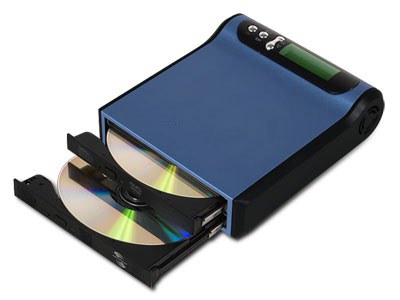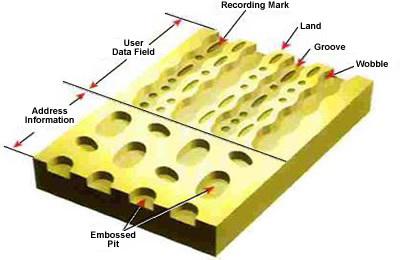Perhaps now it is impossible to meet a man who would never have held a CD in his hands. Recently, these storage media have seriously lost ground due to the active introduction of more technological drives based on solid-state memory. Nevertheless, it is hardly advisable to completely abandon disks.
The DVD capacity is enough to store most programs and multimedia files. Manufacturers indicate that 4.7 GB is available to the user. In fact, for
DVDs, the maximum information capacity is 4.38 GB, which is explained by the difference in the calculation method. Today we will talk about Digital Versatile Disc technology and deal with the nuances of calculating the volume of such storage media.
Definition Problem
The term DVD, surprisingly, does not have an unambiguous interpretation. This technology was developed in order to replace conventional CD-ROMs, the capacity of which was increasingly becoming insufficient. Initially, the abbreviation DVD meant Digital Video Disc. However, later it became clear that not only films, but also other files can be recorded on it.
This was the reason that some began to put a different meaning in the term, meaning DVD as a Digital Versatile Disc. In general, both decryptions are correct.
Increasing Available Volume
Previously, it was pointed out that DVDs replaced CDs whose capacities became insufficient. In order to read digital data recorded on the surface, it is necessary to use a thin laser beam. In the drive devices, a special unit is implemented for this, consisting of a radiating element and a focusing system. The main difference between the light beam used for reading and writing information is that it is coherent, that is, it is very narrowly targeted. This makes it possible to practically eliminate the effects of diffraction and interference of the light wave. When developing the CD standard, miniature semiconductor emitters available at that time were not able to create a sufficiently narrow beam, so the width of the track on the metal base of the disk was about 1.6 μm. Subsequently, more advanced light-emitting diodes were developed, the beam of which was so thin that the track width was reduced by half. Thus, the information capacity of the DVD-ROM has become several times higher than the same parameter CD. In addition to the width of the track, it was possible to change the distance between them, as well as the size of the pits.
"Pie" from disks
The capacity of a DVD-ROM is determined not only by the above dimensions and the configuration of the laser beam. Such storage media were created that, in fact, combined several disks in one product at once, while maintaining the standard dimensions.

Such multilayer compacts can be compared to a sandwich. In the production, not one, but two tracks are used at once, but arranged in such a way that the laser reading beam freely passes through the translucent upper surface. Their volume reached 8.54 GB. The maximum capacity of a DVD-ROM, whose diameter is not 12, but 8 cm, is 5.32 GB. Structurally, the drive can have two emitters, each of which focuses on its depth (surface). There are models with a single beam, the focus of which is controlled by electronics. The information capacity of a DVD could be even greater when so-called two-way solutions were used. Outwardly, this is a regular compact, but writing / reading is possible from two sides, for which most drives needed to turn the media over. The capacity of a DVD-ROM of this modification is from 9.4 GB (double-sided single-layer), to 17.08 (four layers, recording on both sides). Nevertheless, such “pies” were not widely used due to the higher cost of production and the need to handle them with care, since the slightest scratch could lead to the inability to read data from the deeper layers.
Saving information
RAM disks are based on laser beam surface heating technology. Their feature is the ability to perform formatting in the familiar FAT-32 file system and selectively delete files. Structurally, such discs are located in special cartridges, which increases their reliability. Theoretically, if you remove the DVD-RAM from the case, then you can work with it on the drive designated as Multi. These are fairly reliable solutions.

The information capacity of this type of DVD is from 1.46 GB (single-layer single-sided, 8 cm) to 9.4 GB (double-sided). The term RAM means that rewriting is physically possible. The abbreviation can be translated as "Random Access Memory". In fact, this type of disk is designed to back up data and before the advent of alternative media was an excellent solution. Especially when you consider the declared duration of data storage (about 30 years) and the number of rewriting cycles (more than 100 thousand). The disadvantage is the relatively high cost and low distribution.
Videocompacts
The following solutions are DVD-Video. Such discs are designed to record a multimedia stream. Indicated as "DVD-1 ... 18". The first four are modifications with a reduced diameter (8 cm against the standard 12). A classic is DVD-5, from which you can read 4.7 GB (single-layer single-sided).
Accordingly, the maximum DVD capacity in this category is 17.08 GB (DVD-18, two sides, four layers). Since mass video players use the simplest focusing blocks, which makes it possible to reduce the cost of production, not all models can read large-volume disks. An exception is single-sided double-sided, for working with which it is enough just to turn the disk in the drive. Their disadvantage is the lack of space for the label, so the name is indicated on the transparent part, next to the central hole.
Single entry
The advent of disk drives capable of recording digital data on disks at home has made a real revolution in the field of backup and the creation of real movie books. DVD + -R are initially sold without recording. The owner of a special drive can save any information converted to digital form on such a disk.
The color is mirror blue, with a tint in the violet region of the spectrum. The capacity of this type of DVD is from 4.7 GB (one layer on one side) to 17.08 GB. The volume depends, as usual, on the number of layers and sides. But nevertheless, due to the correct
pricing policy , the simplest compacts at 4.7 GB were most widely used. Previously, recording could only be done using a computer drive, but now many video players that can save TV transmissions to discs have this ability. The compatibility problem of “-” and “+” R has long been a thing of the past and is not considered in the article.
Multiple recording
The drawback of the previous type of discs is obvious - they cannot be rewritten by deleting data. To resolve this issue, fundamentally different discs called DVD + -RW were proposed. They can be used almost like a regular drive. The term RW means Rewritable, i.e. rewritable. The capacity of a DVD of this class is exactly the same as that of the “simple” R. However, two-layer ones are extremely rare because of the need to purchase a special drive capable of working with such disks.

In addition, rewritable solutions already require careful handling, and the complexity of their design means that they actually have to blow dust off such discs. A random scratch on the surface may not allow reading information from the lower layers. Thus, the “classic” is a single-layer one-sided disk. The color of the surface varies from gray to almost black. The number of dubbing cycles officially amounts to about several thousand, but in practice such a disc can be recorded no more than 50-100 times. And then over time, the reliability of data storage decreases. Thus, DVD-RW are suitable for short-term data storage and transfer. Recording can be done in block, as usual. At the same time, using the Windows mechanism, it is also possible to work as with a conventional drive (read / write arbitrary files). However, due to the fact that the rewritable disc standard does not allow high speeds, you usually have to be content with four times, equal to 5.5 MB.
Recording feature
The standard DVD capacity may be slightly exceeded. This is achieved through the use of the lead-out zone. Overburn must be supported by the device itself. It can be activated in the popular Nero program by going to “Options - Expert Properties”. We do not recommend using this feature unless absolutely necessary, as you may encounter the inability to read such a disc on a drive that does not know how to work with Overburn.
How volume is calculated
Many computer owners have long noticed that it is impossible to record the amount of information that is indicated by the manufacturer on a CD. In fact, there is no deception here. Just manufacturers of disks for marketing reasons believe that 1 kB is 1000 bytes, although in reality 1024 (we raise two to the tenth power). With an increase in volume, this number grows in progression. Consequently, no more “honest” 4.38 GB is placed on a standard DVD-ROM.